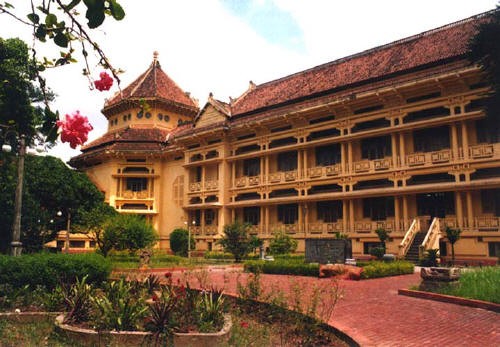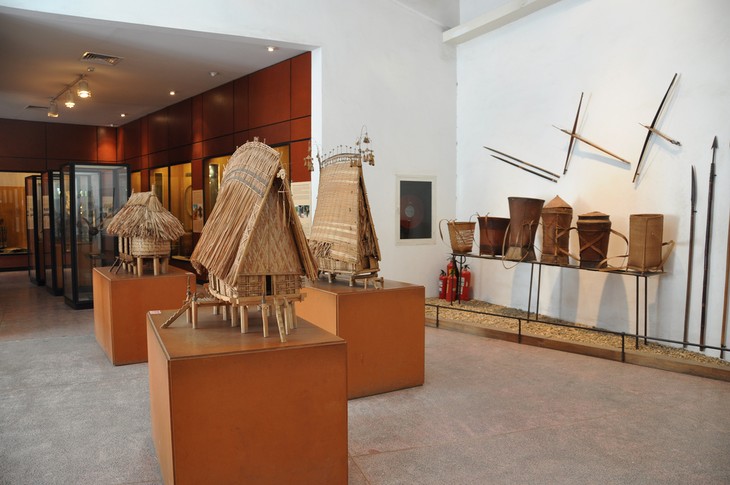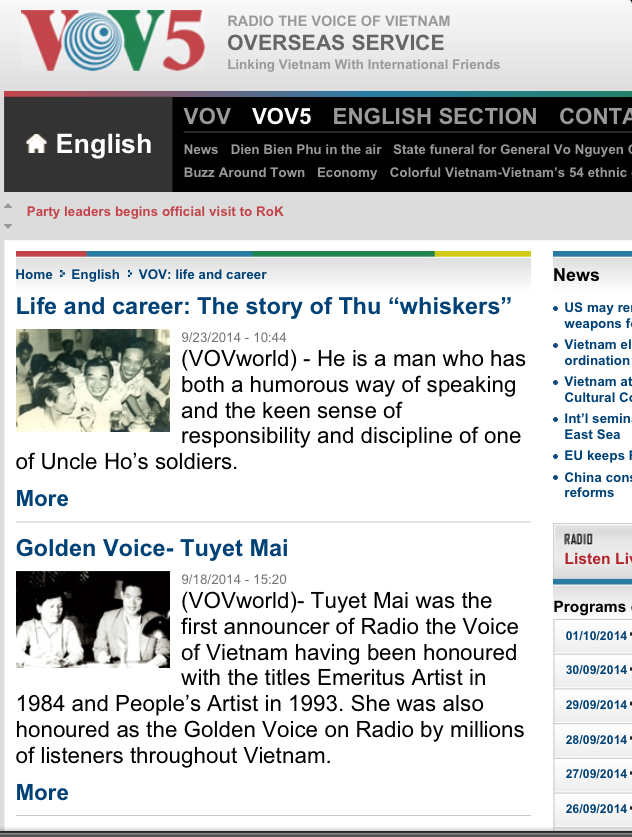Hello and welcome to VOV’s Letter Box, our weekly feature dedicated to listeners throughout the world. I’m Mai Phuong.
And I’m Ngoc Huyen. It’s great to be back again on VOV’s Letter Box.
A: First on our show today, we’d like to welcome Javed Iqbal, a new listener in Pakistan. Javed wrote: “I’m new to radio VOV but in a very short period of time I am much impressed with VOV programs. It gives me the opportunity to learn more about Vietnam and its people. Attributes that make VOV so exciting are the varied range of its programs, interesting features and lively music. VOV is the perfect ambassador spreading the message of peace, friendship and brotherhood to its worldwide listeners”.
B: Javed suggests we launch broadcasts in Urdu because the language is widely spoken by Hindi and Punjabi people in Pakistan, India, Bangladesh, Afghanistan, Thailand and other parts of the world.
A: VOV now broadcasts in 12 languages and we intend to expand to other languages as well. Javed, we will forward your suggestion to our management for consideration. Thank you for tuning in to our broadcasts and we hope to hear more from you.
B: Jayanta Chakrabarty of India reported listening to VOV’s broadcast on September 24, 2014 at 16:00 UTC on the frequency of 7220 khz with SINPO rated at 5444. Jayanta has a question about museums in Vietnam.

Vietnam National Museum of History |
A: Well, there are a lot of museums throughout Vietnam. The Vietnam National Museum of History, with its French architectural style, is one of the most attractive museums in Asia. It contains a large collection of valuable objects depicting Vietnam’s history of construction and defense.
B: The Vietnam National Museum of History opened on September 26, 2011, integrating the Vietnam History Museum and the Museum of the Vietnamese Revolution. These two museums were the first museums in Vietnam. The Vietnam History Museum was at 1 Trang Tien street in the 1926 building that previously housed the Louis Fino Museum of the French School of the Far East. The Museum of the Vietnamese Revolution was at 25 Tong Dan street in a colonial building the Commercial Department of Indochina built in 1917. These two museum buildings, adjoining the Hanoi Opera House, make up an impressive architectural complex.
A: The museum’s 4000 square meters displaying more than 10,000 documents and objects gives visitors a broad overview of the development of Vietnam from the prehistoric period through the national formation period 4000 years ago, the feudal dynasties, the national liberation struggles, and the national uprising and birth of the Democratic Republic of Vietnam on September 2, 1945. The museum introduces the national resistance wars and the Vietnamese people’s achievements in national construction and development.

Display inside the Vietnam Museum of Ethnology
|
B: The Vietnam Museum of Ethnology is probably the largest and undoubtedly the most interesting museum in Vietnam. The Museum was born out of the recognition that Vietnam is a multi-ethnic country and that more attention should be paid to its socio-cultural diversity. Despite being out of the way compared to other museums in Hanoi, the Vietnam Museum of Ethnology is worth a special visit, for anyone interested in multicultural Vietnam.
B: The museum has both an indoor and outdoor section. While the indoor exhibits are particularly informative, the outdoor displays and activities make the museum stand out from the rest. There are a number of houses built using traditional architecture of ethnic minorities, from Vietnam’s northern and central highlands regions.
A: You will be impressed by architecture while being thoroughly charmed by traditional games and activities such as a water puppet show, calligraphy, and the stone game (O An Quan). The museum is especially great if you don’t have the time to visit the remote habitants of the majority of Vietnam’s ethnic minorities.
B: That’s a brief introduction to museums in Vietnam. This week we received a letter from Robert Davidson of Slovakia. He reported listening to our program on September 16 on the frequency of 9730 khz from 1610 to 1630UTC. Robert wrote: “During this entire period of listening, your signal was steady, loud, and clear here in central Europe. There was very little fading or interference and there never was a moment that reception was not clear. My SINPO rating is 55444”.
A: Thank you, Robert, for your report. It is very useful for us to check our transmission quality out there in central Europe. We’ll send you a QSL card to confirm your report.
B: From the US, William Bonilla reported listening to our program on September 26 from 0330 to 0400 UTC on the frequency of 6175 Khz. William wrote: “I first heard the Voice of Vietnam back in 1978 as a 14- year- old. I still enjoy listening to foreign broadcasts after all these years. I hope to visit your country someday, but until then shortwave is a nice way to seek the world without leaving home”.
A: Thank you, William, for tuning in to our broadcast. We hope to see you in Vietnam one day.
B: This week SB Sharma sent us an email reporting on our feature story about “Whiskers”, a person who worked for many years in the French session of the VOV Overseas Service.

VOV: Life and Career |
A: That was not a radio segment, but rather a new segment on our website at www.vovworld.vn. We have launched a new website segment called: “VOV: Life and Career”. This segment presents stories about VOV reporters, editors, and technicians, their personal lives and their devotion to radio broadcasting.
B: These are some very interesting stories about veteran reporters, their memories of VOV in its development years, and the joys and difficulties of radio journalism. Some of the stories are being told for the first time.
A: So check out this new feature on our website to learn more about VOV. We welcome your feedback at: English section, Overseas Service, Radio the Voice of Vietnam, 45 Ba Trieu Street, Hanoi, Vietnam. Or you can email us at: englishsection@vov.org.vn. You’re invited to visit us online at www.vovworld.vn, where you can hear both live and recorded programs. Good bye until next time.